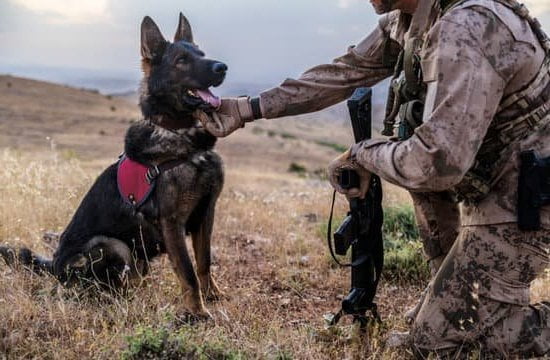Drug dogs play a crucial role in law enforcement, using their keen sense of smell to detect illegal substances and assist in combating drug trafficking. In this article, we will explore the process of training these remarkable canines, from selecting the right breed to utilizing effective training methods and maintaining their skills.
The use of drug dogs is a valuable tool for law enforcement agencies around the world. These specially trained canines are able to detect a wide range of illegal substances, including narcotics, firearms, and explosives. The success of drug dog operations relies heavily on the rigorous and meticulous training that these animals undergo.
Successful drug dog training requires careful consideration of various factors, including the characteristics and temperament of the dog, as well as the selection of appropriate training methods. It is essential to understand the unique abilities and instincts of these animals in order to effectively train them for their vital role in law enforcement.
Selecting the right breed for drug dog training is a critical step in the process. Certain breeds are better suited for this type of work due to their exceptional sense of smell, intelligence, and overall temperament. Understanding the specific traits that make a successful drug dog is key in choosing the right candidate for training.
The Role of Drug Dogs in Law Enforcement
Drug dogs play a crucial role in law enforcement, particularly in the detection of illegal drugs and substances. These highly-trained canines are instrumental in assisting law enforcement agencies in identifying and seizing illegal drugs, as well as apprehending individuals involved in drug trafficking activities. The use of drug dogs has significantly contributed to the success of drug interdiction efforts, making them an invaluable asset for law enforcement.
The primary role of drug dogs in law enforcement includes:
- Search and Detection: Drug dogs are trained to locate various types of narcotics, including but not limited to marijuana, cocaine, heroin, and methamphetamine.
- Asset Forfeiture: By detecting hidden drugs and illegal substances, drug dogs assist in the seizure of contraband, leading to the confiscation of assets linked to drug trafficking.
- Criminal Investigations: Drug dogs aid in the gathering of evidence related to drug-related crimes by uncovering hidden narcotics during operations and investigations.
In addition to their role in detecting illegal drugs, drug dogs also contribute to deterring individuals from engaging in drug-related criminal activities. Their presence alone serves as a deterrent, making it more challenging for criminals to transport or hide illegal substances. Overall, the use of well-trained drug dogs has had a significant impact on combating drug trafficking and reducing the availability of illicit drugs within communities.
Characteristics of Successful Drug Dogs
When it comes to training drug dogs, it is essential to understand the characteristics that make a successful detection dog. These canines play a crucial role in law enforcement, and their keen sense of smell and specific behavioral traits are vital for their success in detecting illegal substances.
Keen Sense of Smell and Detection Abilities
The most important characteristic of a successful drug dog is its exceptional sense of smell. Dogs have an incredibly sensitive olfactory system, with some breeds having up to 300 million scent receptors.
This allows them to detect even the faintest odors associated with drugs or other illicit substances. Successful drug dogs not only have a strong sense of smell but also possess the ability to differentiate between various scents, making them invaluable assets in law enforcement efforts to combat drug trafficking.
High Energy Levels and Drive
Another important characteristic of successful drug dogs is their high energy levels and intense drive to work. These canines must be highly motivated and eager to search for drugs, often for extended periods. Without this intrinsic motivation, it can be challenging to train drug dogs effectively. Selecting breeds known for their high energy levels and work drive is crucial in developing successful detection dogs.
Trainability and Focus
Successful drug dogs also exhibit high levels of trainability and focus. They must be able to learn and retain complex commands while remaining focused on their tasks despite distractions or challenging environments. Breeds known for their intelligence, such as German Shepherds, Belgian Malinois, Labrador Retrievers, or Springer Spaniels, are often selected for drug detection work due to these characteristics.
Understanding these key traits will help trainers select the most suitable candidates for drug dog training programs and harness the potential of these remarkable animals in combating drug trafficking.
Selecting the Right Breed for Drug Dog Training
When it comes to selecting the right breed for drug dog training, there are a few key characteristics to consider. Some breeds are better suited for this type of work due to their natural abilities and instincts. It’s important to choose a breed that has the drive, energy, and intelligence necessary to excel in drug detection work.
Characteristics to Consider
One of the most important characteristics to consider when selecting a breed for drug dog training is the dog’s sense of smell. Breeds with a keen sense of smell, such as German Shepherds, Labrador Retrievers, and Belgian Malinois, are often preferred for this type of work. These breeds have been known to be successful in detecting drugs due to their superior olfactory abilities.
Another important characteristic is the dog’s energy level and drive. Drug detection work can be demanding, both physically and mentally, so it’s crucial to select a breed that has the stamina and motivation to perform repetitive tasks for extended periods of time. Breeds such as German Shorthaired Pointers, Border Collies, and Springer Spaniels are known for their high energy levels and intense drive, making them well-suited for drug dog training.
Importance of Temperament
Furthermore, temperament is a vital aspect when choosing a breed for drug dog training. The ideal drug detection dog should possess traits such as focus, determination, and confidence. Additionally, they should be able to remain calm and composed even in high-stress environments. Breeds with stable temperaments like Weimaraners, Doberman Pinschers, and Vizslas are often considered suitable candidates for drug detection work due to these characteristics.
Training Methods for Drug Dogs
When it comes to training drug dogs, there are various methods that can be used to develop their detection skills. Here are some effective training methods for drug dogs:
- Scent Imprinting: One method involves introducing the dog to a specific scent by associating it with a positive experience, such as play or treats. This helps the dog recognize and become familiar with the target odor.
- Target Odor Recognition: Once the dog has been imprinted with a specific scent, the next step is to teach them to recognize and indicate the presence of that odor. This can be done through repetitive exercises where the dog is rewarded for correctly identifying the target odor.
- Controlled Exposure: Training sessions should include controlled exposure to various environments and situations where drugs may be present. This allows the dog to become accustomed to detecting odors in different settings.
Each of these training methods plays a crucial role in developing a drug dog’s ability to accurately detect and indicate the presence of illegal substances. Additionally, consistent and regular training sessions are essential in maintaining and improving the dog’s detection skills.
Utilizing Positive Reinforcement in Drug Dog Training
One effective approach in training drug dogs is through positive reinforcement. By rewarding the dog for correctly identifying and indicating the presence of drugs, they are more likely to repeat this behavior in future scenarios.
- Rewards: Offering rewards such as treats, toys, or praise when the dog successfully identifies target odors encourages them to continue exhibiting this behavior during training exercises.
- Consistency: It is important for handlers to consistently reward correct indications by drug dogs in order to reinforce their detection skills. This positive reinforcement helps solidify their ability to identify target odors accurately.
- Relationship Building: Positive reinforcement also helps strengthen the bond between handler and dog, creating a trusting and cooperative relationship that is crucial for successful drug detection operations.
By incorporating positive reinforcement techniques into drug dog training, law enforcement agencies can effectively develop highly skilled K9 units capable of combating drug trafficking activities.
In addition to utilizing positive reinforcement methods, it is also important for handlers to undergo proper training themselves in order to effectively work alongside drug dogs during operations. Handler training ensures that both parties work cohesively as a team and understand how best to leverage each other’s strengths during real-life scenarios involving drug detection.
Utilizing Positive Reinforcement in Drug Dog Training
Positive reinforcement is a key aspect of effectively training drug dogs. Unlike punitive methods, positive reinforcement focuses on rewarding the desired behavior, making it more likely to be repeated. In drug dog training, this can involve using treats, toys, or verbal praise as a reward for correctly identifying narcotics during a search. By associating the act of finding drugs with a positive outcome, drug dogs are motivated to continue exhibiting the behavior.
One common method of positive reinforcement in drug dog training is through clicker training. This involves using a small device that makes a clicking sound to mark the precise moment when the dog performs the desired behavior. The click is then followed by a reward, creating a clear association between the behavior and the positive outcome. This method has been found to be highly effective in teaching drug dogs to accurately detect illegal substances.
In addition to treats and toys, verbal praise and affection also play an important role in positive reinforcement. Drug dogs thrive on their handler’s approval and attention, making them more likely to perform well during searches. Using a combination of rewards and consistent positive reinforcement helps create a strong bond between the dog and their handler, leading to successful drug detection operations.
The Importance of Handler Training
Drug dog training is not just about the dogs themselves, but also about the handlers who work with them. The importance of handler training cannot be overstated when it comes to maximizing the effectiveness of drug detection teams. Handlers play a crucial role in providing leadership, guidance, and care for their canine partners. Without proper training for handlers, drug dogs may not perform at their best potential.
Handler training involves learning how to properly communicate with and understand their canine partners. This includes understanding the dog’s body language and behavior, as well as effectively interpreting their alert signals during searches. Handlers also need to be knowledgeable about different types of drugs and drug paraphernalia in order to interpret their dog’s alerts accurately.
Handlers should undergo rigorous training programs that educate them on best practices for handling drug dogs, including methods for maintaining a strong bond between the dog and its handler. It is vital for handlers to develop trust and respect from their canine companions in order to work effectively as a team in detecting illegal substances. Therefore, comprehensive handler training is essential for enhancing the success of drug detection operations.
| Aspect | Importance |
|---|---|
| Communication with Dogs | Understanding the dog’s body language and behavior |
| Drugs Knowledge | Familiarity with different types of drugs and paraphernalia |
| Bond Building | Developing trust and respect with the canine partner |
Maintaining the Skills of Drug Dogs
Once drug dogs are trained and deployed in law enforcement agencies, it is crucial to maintain and continuously develop their skills to ensure their effectiveness in detecting illegal substances. Regular training and maintenance help keep drug dogs sharp, focused, and reliable in various operational environments.
One way to maintain the skills of drug dogs is through regular and consistent training sessions. These sessions should include practice exercises, simulations, and exposure to different scenarios that the dogs may encounter during actual operations. Ongoing training also allows handlers to identify any weaknesses or areas for improvement in the dog’s performance.
In addition to regular training, it is essential to provide mental and physical stimulation for drug dogs. Engaging them in activities that promote problem-solving, agility, and endurance can help keep their senses sharp and prevent boredom or burnout. Moreover, maintaining the overall health and well-being of drug dogs is critical for sustaining their abilities to effectively detect drugs. Proper diet, exercise, and healthcare are essential factors in ensuring that drug dogs remain fit for duty.
| Drug Dog Maintenance | Data |
|---|---|
| Training Sessions | Regular practice exercises, simulations, exposure to different scenarios |
| Mental & Physical Stimulation | Problem-solving activities, agility exercises, ensuring overall health and well-being |
Common Mistakes to Avoid in Drug Dog Training
When it comes to training drug dogs, there are several common mistakes that handlers should avoid in order to ensure the success of the training. One of the most common mistakes is inconsistent training methods. It is important for handlers to establish a consistent training routine that reinforces the behaviors they want to see in their drug dogs. Inconsistency can lead to confusion for the dog and hinder their ability to perform well in detecting drugs.
Another mistake to avoid is neglecting proper socialization for drug dogs. Socialization is crucial for all dogs, including those trained to detect drugs. Proper socialization can help prevent fear or aggression towards people or other animals, which can ultimately impact the dog’s ability to effectively do their job.
Finally, overlooking the importance of regular maintenance and care for drug dogs can be a critical mistake in their training. Just like any other working animal, drug dogs require regular exercise, grooming, and veterinary care to ensure they are healthy and able to perform at their best. Neglecting these basic needs can have a negative impact on a dog’s ability to perform their duties as well-trained drug detection animals.
Conclusion
In conclusion, well-trained drug dogs play a crucial role in law enforcement’s efforts to combat drug trafficking. These highly skilled canine units contribute significantly to the success of investigations and operations aimed at intercepting illegal drugs. By utilizing their keen sense of smell and rigorous training, drug dogs are able to detect even the most discreetly concealed drugs in various settings such as airports, border crossings, and vehicles.
Through careful selection of breeds with appropriate characteristics and thorough training methods that incorporate positive reinforcement, law enforcement agencies can ensure that their drug dogs are equipped to effectively carry out their duties. Additionally, continuous handler training plays an essential role in maintaining the skills and performance of these canine units.
The impact of well-trained drug dogs cannot be overstated when it comes to disrupting drug trafficking activities and preventing illegal substances from reaching communities. As such, ongoing support for the training and maintenance of these valuable assets is essential for the overall success of law enforcement efforts in combating the illicit drug trade.
Frequently Asked Questions
How Do They Train Drug Dogs?
Drug dogs are trained using a method called “odor imprinting,” where they are introduced to the smell of various drugs and then rewarded when they successfully identify the scent. The training process involves gradually increasing the difficulty of finding the scents in different environments, such as buildings, vehicles, or open areas.
How Do I Train My Dog to Be a Sniffer Dog?
Training a dog to be a sniffer dog involves specific steps, including teaching basic obedience commands, introducing them to various scents, and then reinforcing their ability to locate those scents. It’s important to use positive reinforcement techniques such as treats or toys to encourage the behavior and gradually increase the difficulty of the tasks.
How Long Does It Take to Train a Drug Detection Dog?
The length of time it takes to train a drug detection dog can vary depending on factors such as the dog’s breed, temperament, and previous training experience. Generally, it can take several weeks to several months of consistent training for a dog to become proficient at detecting drugs. Continual practice and reinforcement are essential in maintaining their skills.

Welcome to the blog! I am a professional dog trainer and have been working with dogs for many years. In this blog, I will be discussing various topics related to dog training, including tips, tricks, and advice. I hope you find this information helpful and informative. Thanks for reading!





